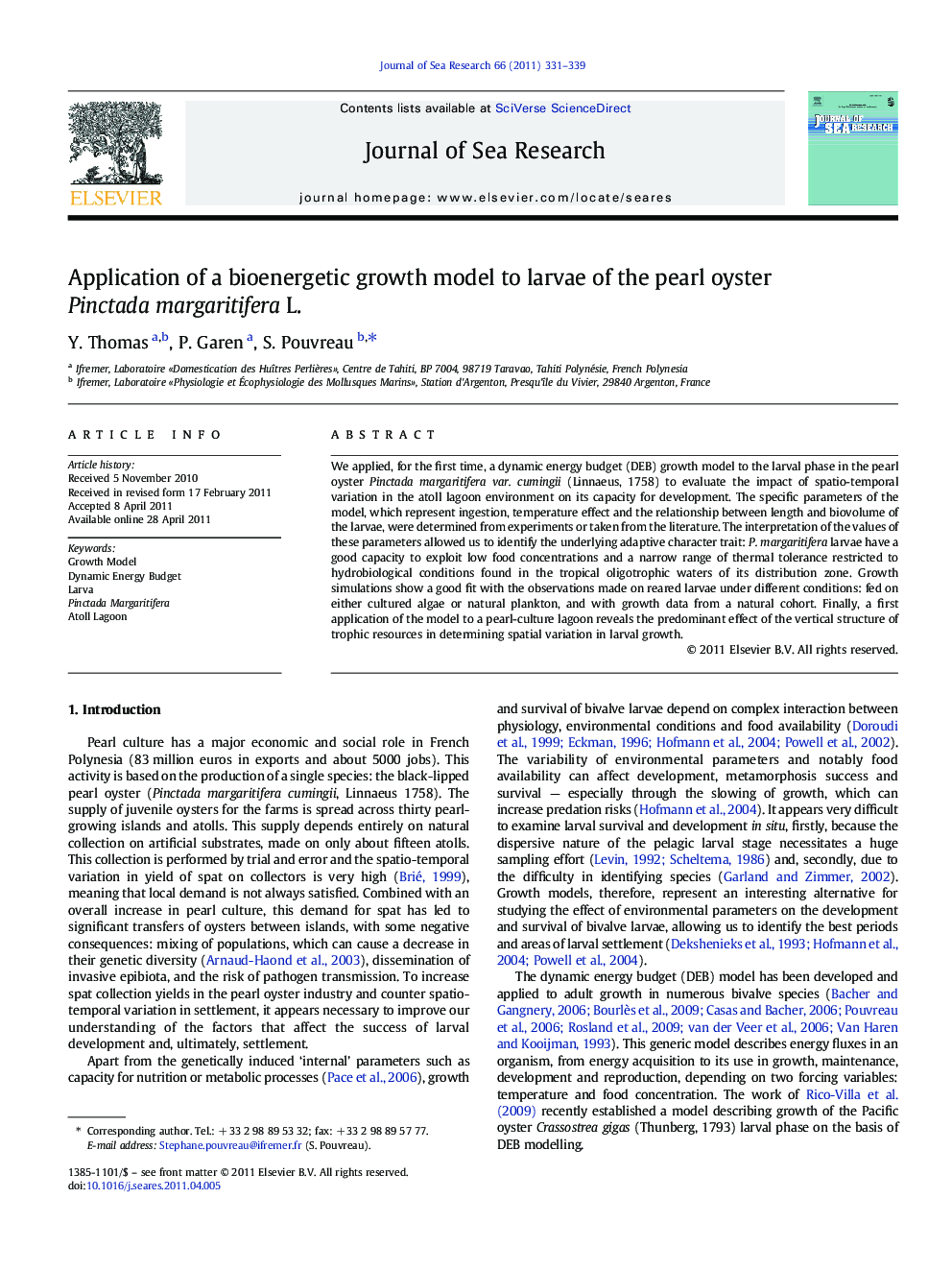| Article ID | Journal | Published Year | Pages | File Type |
|---|---|---|---|---|
| 4550027 | Journal of Sea Research | 2011 | 9 Pages |
We applied, for the first time, a dynamic energy budget (DEB) growth model to the larval phase in the pearl oyster Pinctada margaritifera var. cumingii (Linnaeus, 1758) to evaluate the impact of spatio-temporal variation in the atoll lagoon environment on its capacity for development. The specific parameters of the model, which represent ingestion, temperature effect and the relationship between length and biovolume of the larvae, were determined from experiments or taken from the literature. The interpretation of the values of these parameters allowed us to identify the underlying adaptive character trait: P. margaritifera larvae have a good capacity to exploit low food concentrations and a narrow range of thermal tolerance restricted to hydrobiological conditions found in the tropical oligotrophic waters of its distribution zone. Growth simulations show a good fit with the observations made on reared larvae under different conditions: fed on either cultured algae or natural plankton, and with growth data from a natural cohort. Finally, a first application of the model to a pearl-culture lagoon reveals the predominant effect of the vertical structure of trophic resources in determining spatial variation in larval growth.
Research highlights► We developed a DEB model for Pinctada margaritifera larvae. ► To our knowledge, it is the third application of a DEB model for bivalve larvae, but the first one for tropical bivalves. ► This model is used to give insight into the ecology of this species. ► Application for aquaculture purposes is also discussed.
